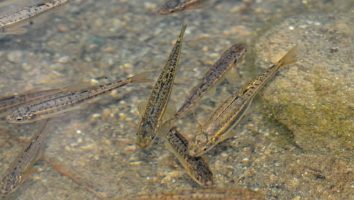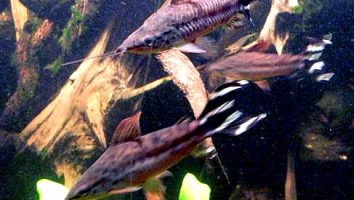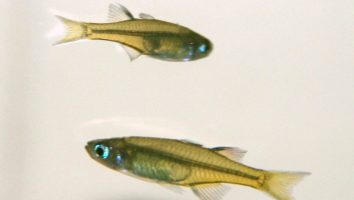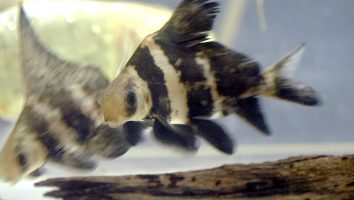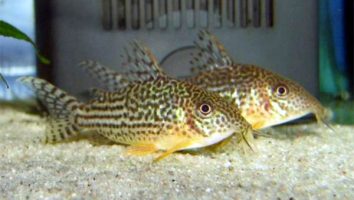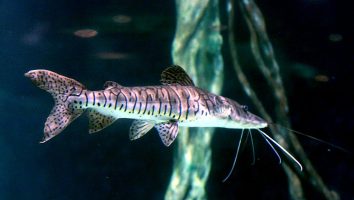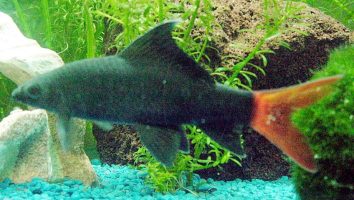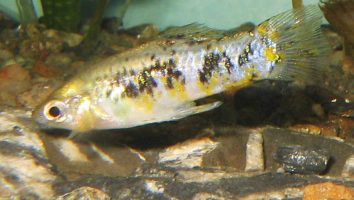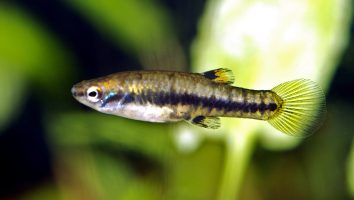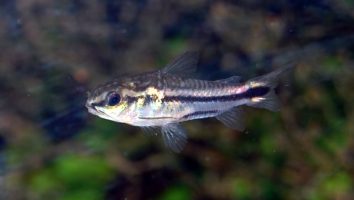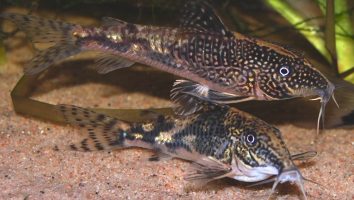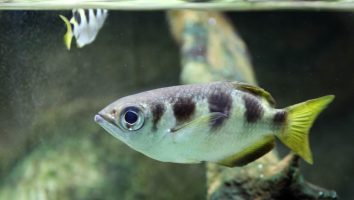The Southern redbelly dace is a small and peaceful freshwater fish that is a great addition to any community tank.
They are relatively easy to care for and are very active, making them fun to watch.
This guide will teach you everything you need to know about Southern redbelly dace care. You’ll learn about their diet, size, lifespan, and more!
Table of contents
Species overview
The Southern redbelly dace (Chrosomus erythrogaster) is a freshwater fish that is found in the southern United States.
They prefer streams and rivers with a moderate current and a sandy or gravel bottom. This fish is omnivorous and feeds on a variety of small insects, crustaceans, and mollusks.
The Southern redbelly dace is a popular choice for aquariums because of its hardiness and bright coloration. It is also a popular baitfish for sport fishing.
Appearance
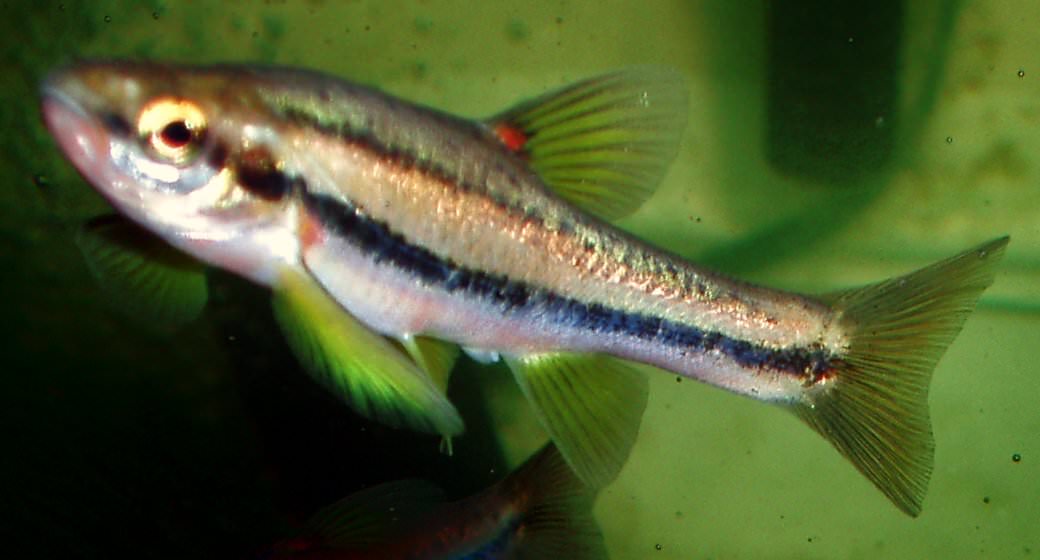
The Southern redbelly dace is a beautiful little freshwater fish that’s perfect for community tanks. As you can probably guess from their name, the Southern redbelly dace has a reddish hue on their belly that extends up to their chin and lower jaw area.
This color is separated from the rest of their body by a dark line that runs along their sides. The rest of their body is a olive green that can look brown in certain lighting.
You’ll also notice that males tend to be more colorful than females. The color on their belly will be a brighter red and they may have some iridescent scales on their backs.
Males also tend to be a bit larger than females, reaching up to 2.8 inches in length while females only grow to be about 2.4 inches.
Their fins are all relatively small with the exception of their dorsal fin. The dorsal fin is tall and starts about halfway back on their bodies.
They have a forked caudal fin that’s slightly taller than their dorsal fin. Both of these fins have a dark line running along the edge.
The pectoral fins are small and begin right behind their head. The ventral fins are also small and positioned right behind their pectoral fins.
Lifespan
In the wild, southern redbelly dace have a lifespan of 2 to 3 years. But in captivity, with proper care, they can live up to 5 years or more.
Size
The maximum size for a Southern redbelly dace is about 3 inches. These fish typically don’t grow any larger than 2 inches, though.
Tank
Tank Size
The recommended tank size for Southern redbelly dace is 10 gallons. This is the minimum size we recommend but, as with all fish, the bigger the tank the better.
In a 10 gallon tank, you can keep a school of 5-6 fish with no problem. If you want to keep more fish, you’ll need to increase the size of your tank accordingly.
Water Parameters
The water parameters you need to maintain for Rosy Red Minnows are very generous. This makes them a great freshwater fish for a beginner since there’s a lot of room for error.
The most important thing to remember when it comes to their water parameters is consistency. Even though these are very hardy fish, they can be sensitive to sudden changes just like any other freshwater species.
Even though they’re still a bit more durable in this regard, you should use this as practice. Challenge yourself to see how consistent you can keep the water parameters and how easily you can make an adjustment if needed. These skills will come in handy with other species you keep in the future!
- Water Temperature: 50°F to 78°F
- pH Levels: 7 to 8
- Water Hardness: Mildly soft to very hard
- Alkalinity Levels: 2-12 dKH
What To Put In Their Tank
Southern redbelly dace are a species of fish that come from freshwater streams and rivers. In the wild, these fish are used to having a lot of space to swim around in.
When it comes to setting up an aquarium for them, you’ll want to replicate their natural environment as best as you can.
The first thing you’ll need to do is choose a suitable substrate. These fish like to spend a lot of time near the bottom of the tank, so you’ll want something that’s soft and comfortable for them. Sand or gravel are both good choices.
After that, you’ll want to add some plants and decorations. These fish like to have a lot of places to hide, so you’ll want to add some rocks, driftwood, and caves. Be careful not to go overboard though. You still want to leave plenty of open swimming space for them.
Last but not least, you’ll need to add some water movement to the tank. These fish come from fast-moving waters, so you’ll want to add a filter with a decent flow rate. You can also add an air stone to help increase the oxygen levels in the water.
Common Diseases
Southern redbelly dace are a hardy and resilient species of fish. They don’t often fall ill and can tolerate a wide range of water conditions.
However, that doesn’t mean that they’re immune to disease. There are still a few illnesses that these fish are susceptible to.
The most common one is ich. This is a very common freshwater parasite that can affect almost any fish species. It presents itself as small white spots on the body, fins, and gills of your fish.
If left untreated, ich can be deadly. However, it’s relatively easy to treat if you catch it early.
Other potential diseases include infections, fin rot, and worms. These are all relatively rare in southern redbelly dace but can still occur if the water conditions in the tank are not ideal.
As always, the best way to prevent disease is to maintain clean and stable water conditions in the tank. A healthy environment will lead to healthy fish who are more resistant to disease.
Behavior & Temperament
The southern redbelly dace is a peaceful fish that is known to be a great addition to any community tank. They are relatively active fish that enjoy swimming in open areas of the tank, but they also like to hide amongst plants and other decorations.
One of the most interesting things about the southern redbelly dace is their breeding behavior. The males will build nests out of plant materials and defend them vigorously. The females will then lay their eggs in the nests and the males will fertilize them.
After the eggs hatch, the fry will be cared for by the parents for a short period of time before they are on their own.
Overall, the southern redbelly dace is a great addition to any community tank. They are peaceful fish that are interesting to watch and easy to care for.
Tank Mates
The best tank mates for Southern redbelly dace are other small, peaceful fish. These fish are timid and need to feel secure in their environment.
As a result, you don’t want to add any aggressive or boisterous tank mates. This will only cause the dace stress and could lead to illness or death.
Here are some compatible species to consider:
- Ghost shrimp
- Cherry shrimp
- Amano shrimp
- Guppies
- Platies
- Mollies
- Swordtails
- Neon tetras
- Cardinal tetras
- Corydoras catfish
Breeding
The southern redbelly dace is an easy fish to breed in captivity. As long as you provide them with the right habitat and water conditions, they will take care of everything else.
To start, you will need to identify the males and females. The males are typically smaller with brighter colors. They also have a long, slender body shape.
Once you have your pair, you will need to set up a breeding tank. The tank should be at least 20 gallons in size and filled with clean, filtered water. The temperature should be kept between 68 and 72 degrees Fahrenheit.
You will also need to add some plants and hiding places to the tank. The plants help to keep the water quality high and provide a place for the female to lay her eggs. The hiding places give the fry somewhere to hide when they are first born.
When everything is ready, you can add the fish to the tank. The female will lay her eggs in the plants. The male will then fertilize them.
After the eggs have been fertilized, the male will guard them until they hatch. This usually takes about 7-10 days.
Once the fry have hatched, you can remove the adults from the tank. The fry will feed on the microscopic organisms in the water. You can supplement their diet with baby brine shrimp.
Conclusion
The Southern Redbelly Dace is a great fish for anyone who wants a pet that is both low-maintenance and interesting to look at.
This fish is perfect for beginner aquarists or those who don’t have a lot of time to dedicate to their tank.
However, even experienced hobbyists will appreciate the beauty and simplicity of this fish.
If you’re looking for a new fish to add to your tank, we highly recommend the Southern Redbelly Dace!

